If you want a full body workout in one exercise that really blasts your backside, then you need to include deadlifts in your routine.
There are many variations of the deadlift, but all of them are a great posterior chain exercise to increase your back, glute and hamstring strength.
How to Deadlift Properly:
The Conventional Deadlift:
The Conventional Deadlift works your entire posterior chain.

To do this variation, you will stand with a barbell right at your shins. Your feet should be about hip-width to shoulder-width apart. Reach down and grab the bar outside of your shins.
To grab the bar, push your butt back and bend your knees as you lean over the bar. Keep your back flat and tension on the bar. Then pull up on the bar, driving back through your heels. Come to a full stand and squeeze your glutes at the top.
Then lower back down, sitting back into your heels and bending your knees as you hinge over.
This is NOT a squat. You are bending your knees, but you are hinging at the hips as you do.
To lift the bar, make sure you have tension on it before you lift. Your arms should be locked out and you should be pulling up on the bar before you even attempt to lift it off the ground.
Make sure to pull the bar back toward you and drive through your heels as you lift. If you come forward and let the bar get away from your body, you are going to end up not being able to lift the weight or hurting your low back.
Brace your core as you lift and make sure you feel it in your glutes and that your back stays straight.
Deadlift Variations:
There are lots of deadlift variations that work your backside in different ways.
The Sumo Deadlift is a great way to work your glutes and back as well as your adductors. The Sumo Deadlift is way more leg focused so if you are looking to lift more weight and have strong legs, you may want to try this variation.
However, the Sumo variation is hard on the hips. Make sure that if you do it for awhile you work on your hip mobility and that you switch back to Conventional or another variation every once in awhile to give your hips a rest.
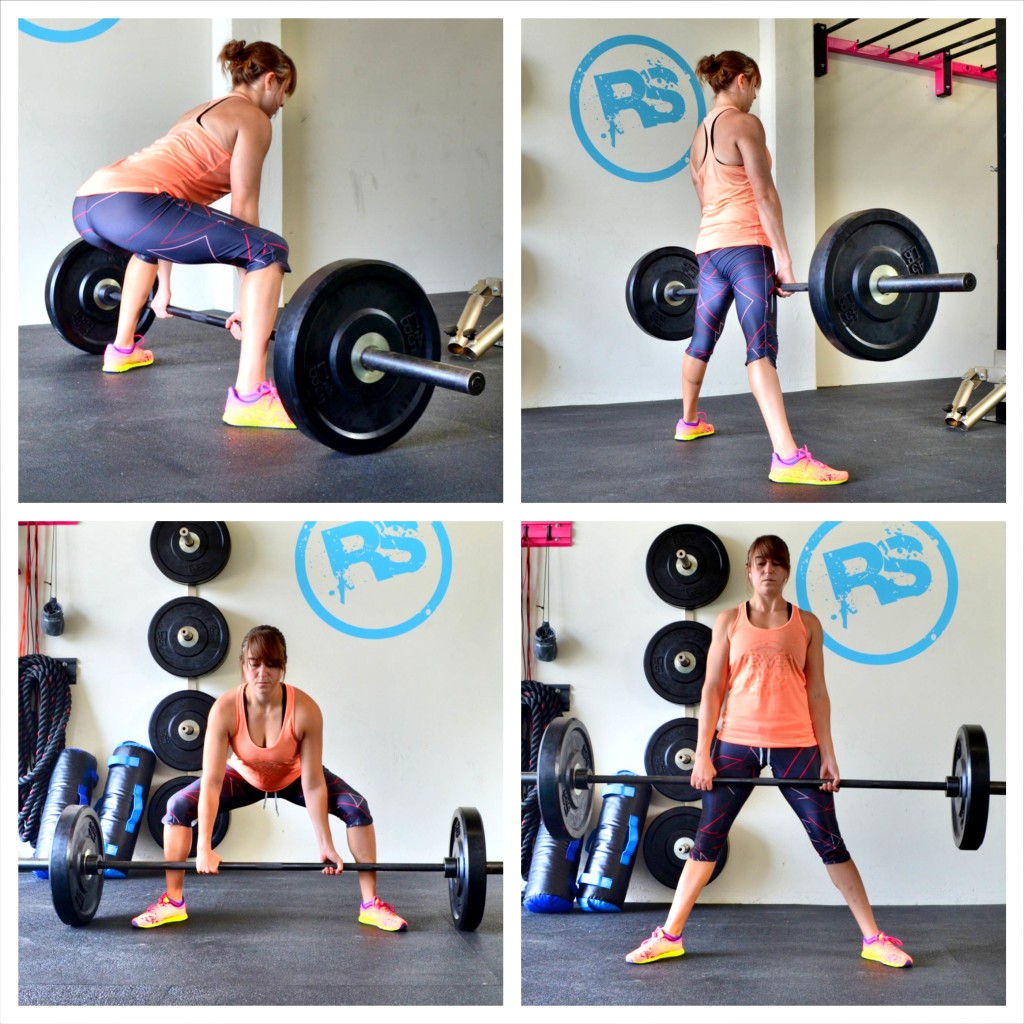
To do the Sumo Deadlift, set your feet wider than shoulder-width with your toes turned out slightly and your shins against the barbell. Reach down and grab the bar between your legs about hip-width apart. Bend your knees and sit your butt back to reach the bar.
You should hinge forward a bit at the hips and lean your chest forward as you sink down. Then driving up through your heels, come back up to standing.
Stand up tall and squeeze your glutes. Then sit your butt back and hinge over as you lower the bar to the ground.
Make sure to keep the bar close to your body the entire time to make sure you are using your posterior chain to lift!
You can also do the Sumo Deadlift with a kettlebell.
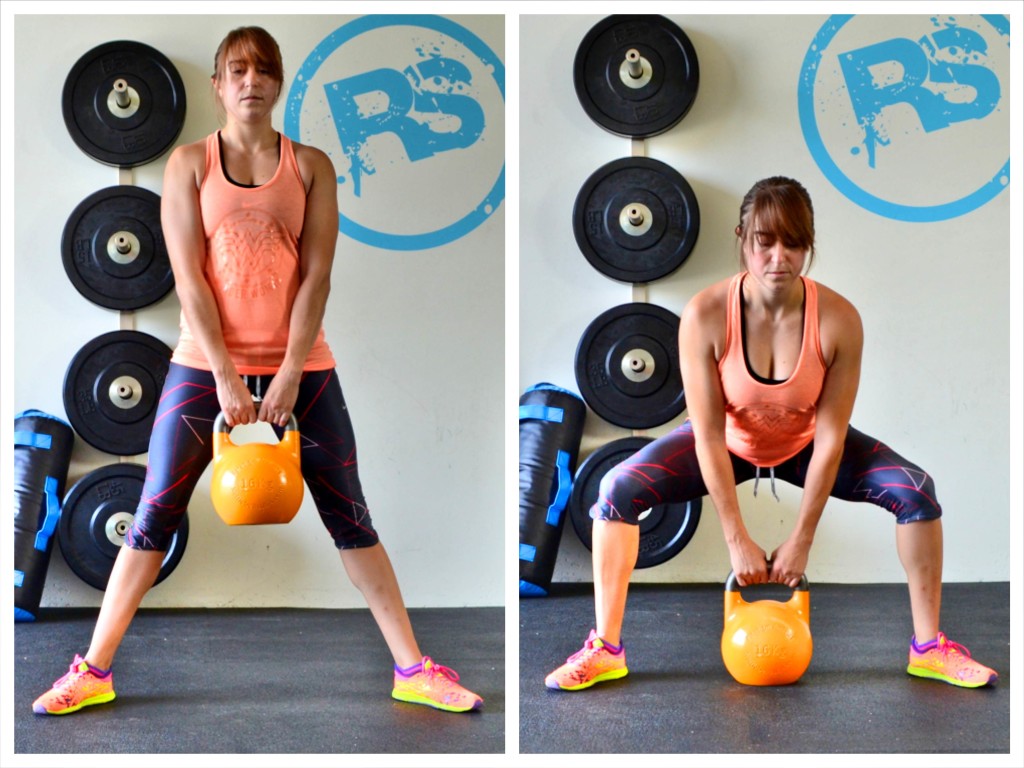
Another great deadlift variation is the Single Leg Deadlift. This variation works your entire backside while also really developing core strength and balance.
Beginners will want to start with bodyweight while more advanced lifters can use a barbell, sandbag or kettlebells.
To do the kettlebell Single Leg Deadlift, hold a kettlebell in each hand down by your sides. Stand on your right leg with your knee slightly bent and your left toe lightly touching the ground.
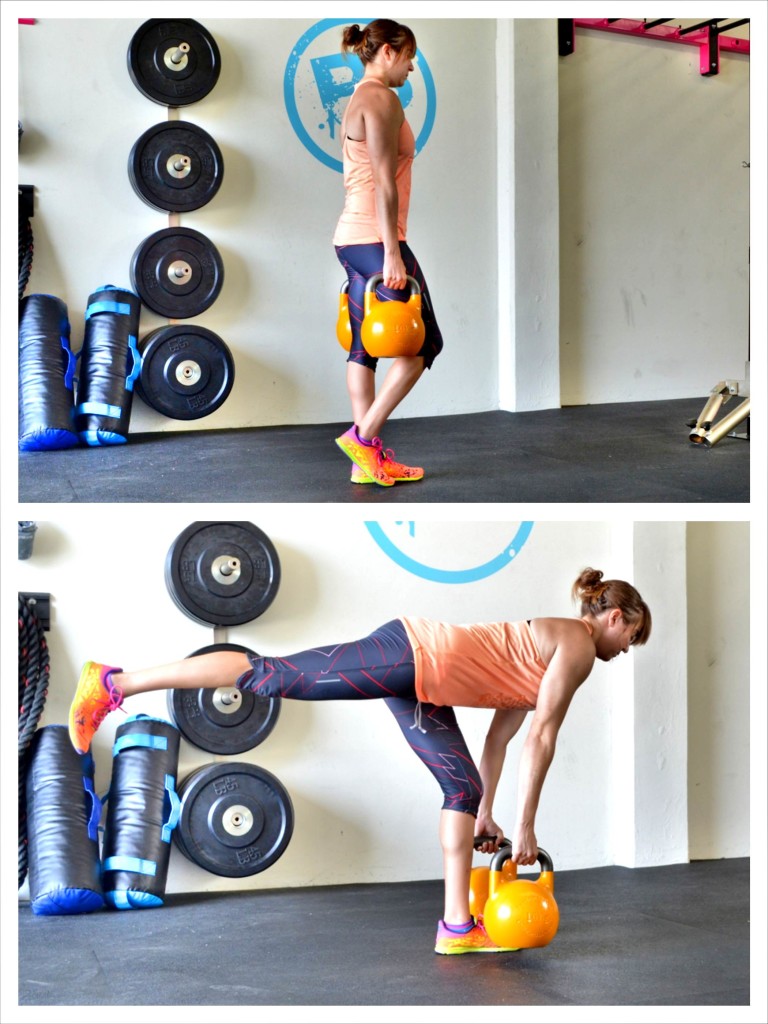
Then lift your left leg back toward the wall behind you as you hinge over, keeping your back flat. As you hinge over, drop the kettlebells down and back.
Do not reach them toward the ground and let your back round. Only lower them as far as you can without rounding or “squatting.” Your standing knee should be soft but isn’t going to bend extra as you hinge over.
Make sure that as you hinge over you sit back in your heel and then drive through your heel to come back up to standing. You want to feel your hamstring and glute work.
Another deadlift variation you can do to really target your hamstrings is the Stiff Legged Deadlift (some may call it the Romanian Deadlift or even the Straight Leg Deadlift depending on your definition of each movement).

To do the Stiff Legged Deadlift, stand with your feet about hip-width apart. You can use a barbell, kettlebell or sandbag.
If you use a kettlebell, hold it right in front of your feet with both hands. With a slight bend to your knees, hinge over and grab the bell. Keeping your back flat and your arms straight, drive back up through your heels and come to standing. At the top, squeeze your glutes and stand up nice and tall. Then sitting back in your heels, lower the bell back down, keeping your back flat.
Using these variations, you can also change up the movements by how you load them down. You can change up the type of weight you use (kettlebells, sandbags, barbells). For example, you can use a sandbag instead of kettlebells for the single leg deadlift.
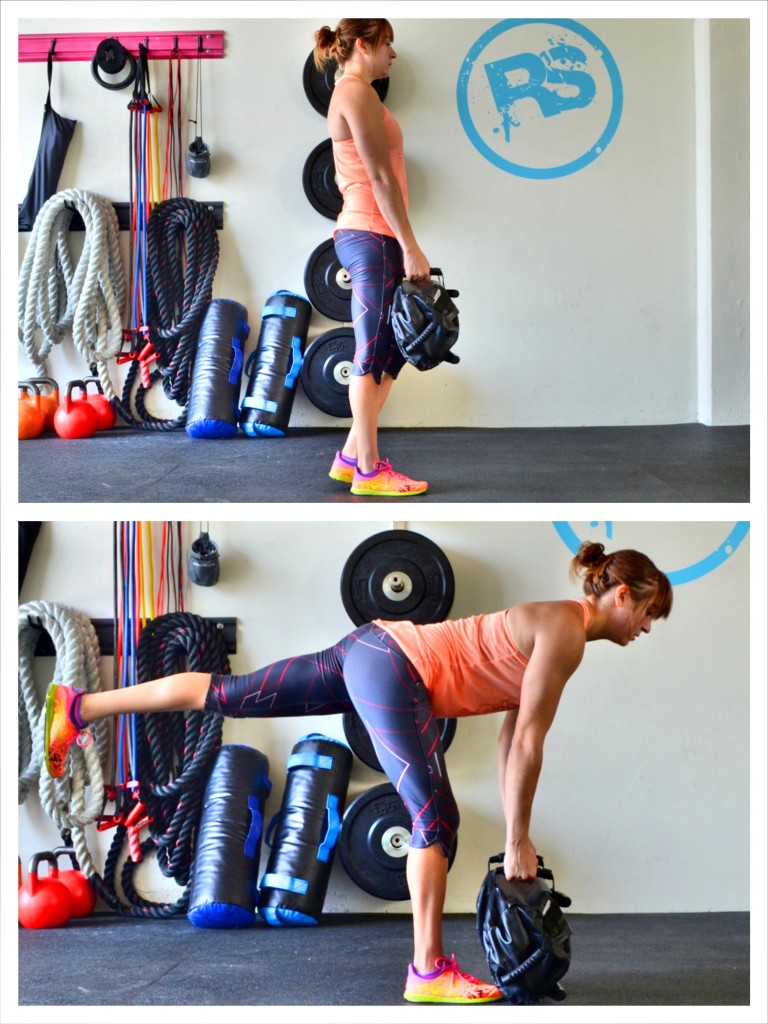
You can even change up the way you hold the weight.
For instance, you could do a Conventional Deadlift but load it unilaterally and only hold a weight on one side.
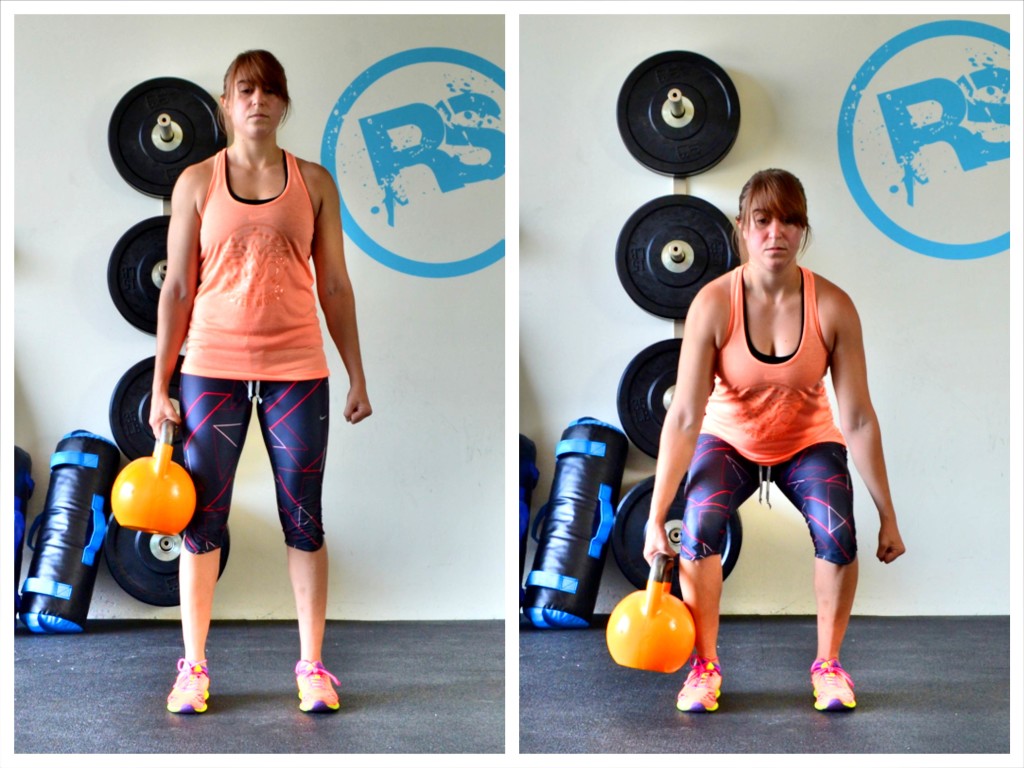
Same goes for the Single Leg Deadlift. You can hold a weight on either the same side as the standing leg or on the opposite side of the standing leg.
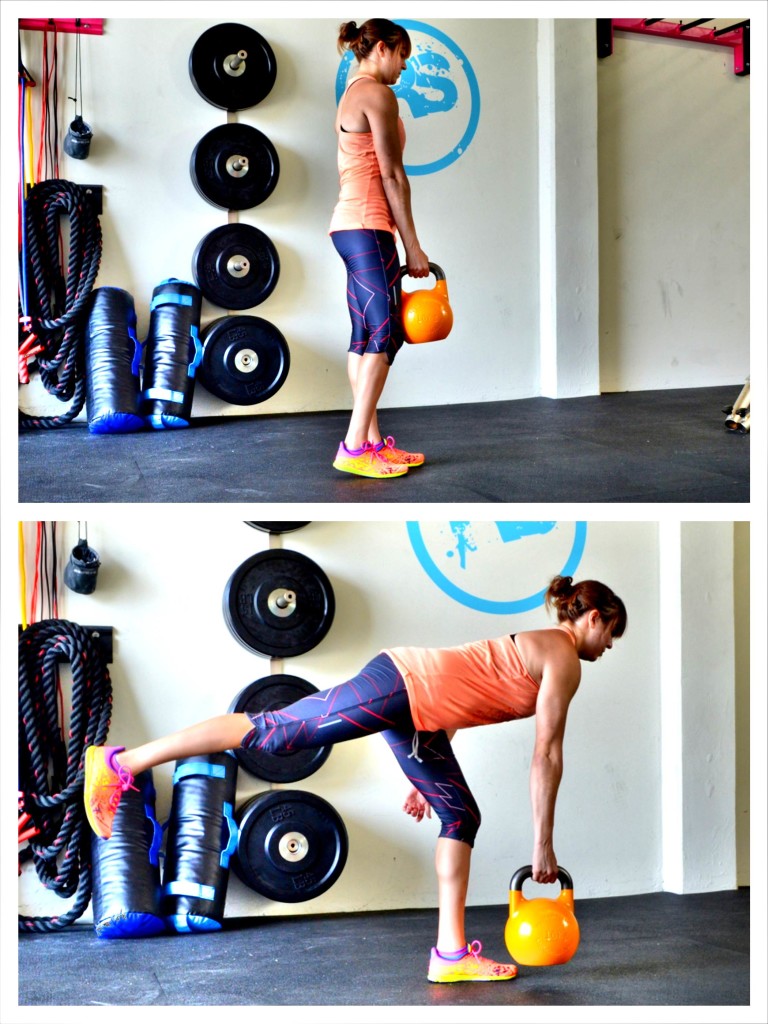
By unilaterally loading the deadlift, you force your core to work harder to stabilize. You change up the way the movement works your body just by simply loading it down in a different way.
You can also do a suitcase deadlift in which you do a conventional deadlift but hold a weight in each hand outside of your legs. This can be done with dumbbells, sandbags or kettlebells.
With any deadlift variation you do, you are going to get in a great posterior chain workout! For some other great glute moves, check out these Best Glute Exercises. And click here for some Bodyweight Back Exercises.
NOTE: With deadlifts, coaches may tell you different things about head positioning and neck alignment. I’ve heard coaches tell people to look up as they lift to help them drive up and use their posterior chain if they have a tendency to come forward. I’ve also heard coaches tell clients to keep their head and neck perfectly in line with their spine. I personally believe both can work. And if you are doing single leg deadlifts, you may find you need to focus on a spot in front of you to balance. As long as you don’t feel like you are really straining your neck or shrugging your shoulders unnaturally (and you maintain great form with the rest of your body), I would do what feels comfortable and allows you to do the movement smoothly.
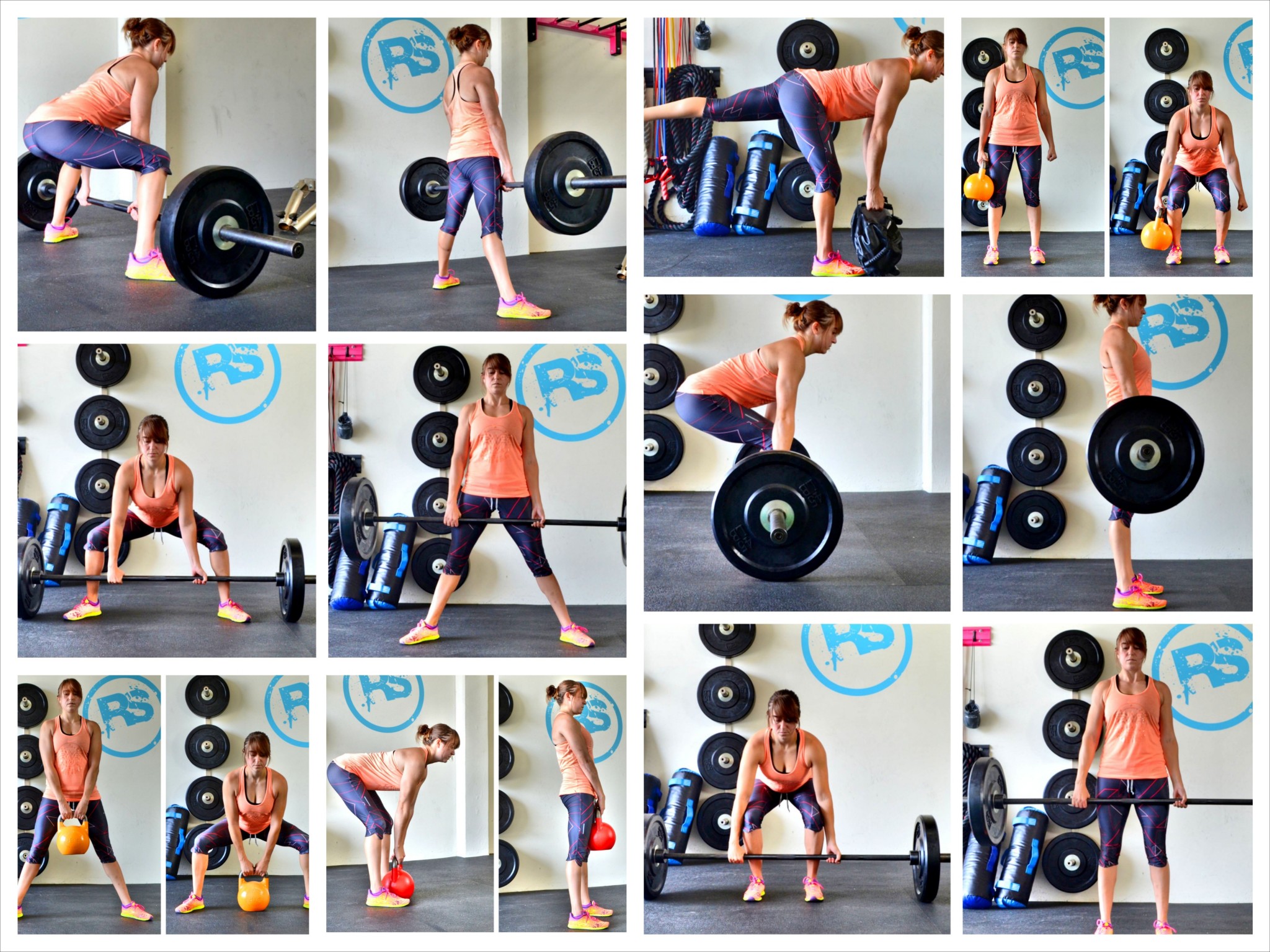


0 Comments
Trackbacks/Pingbacks